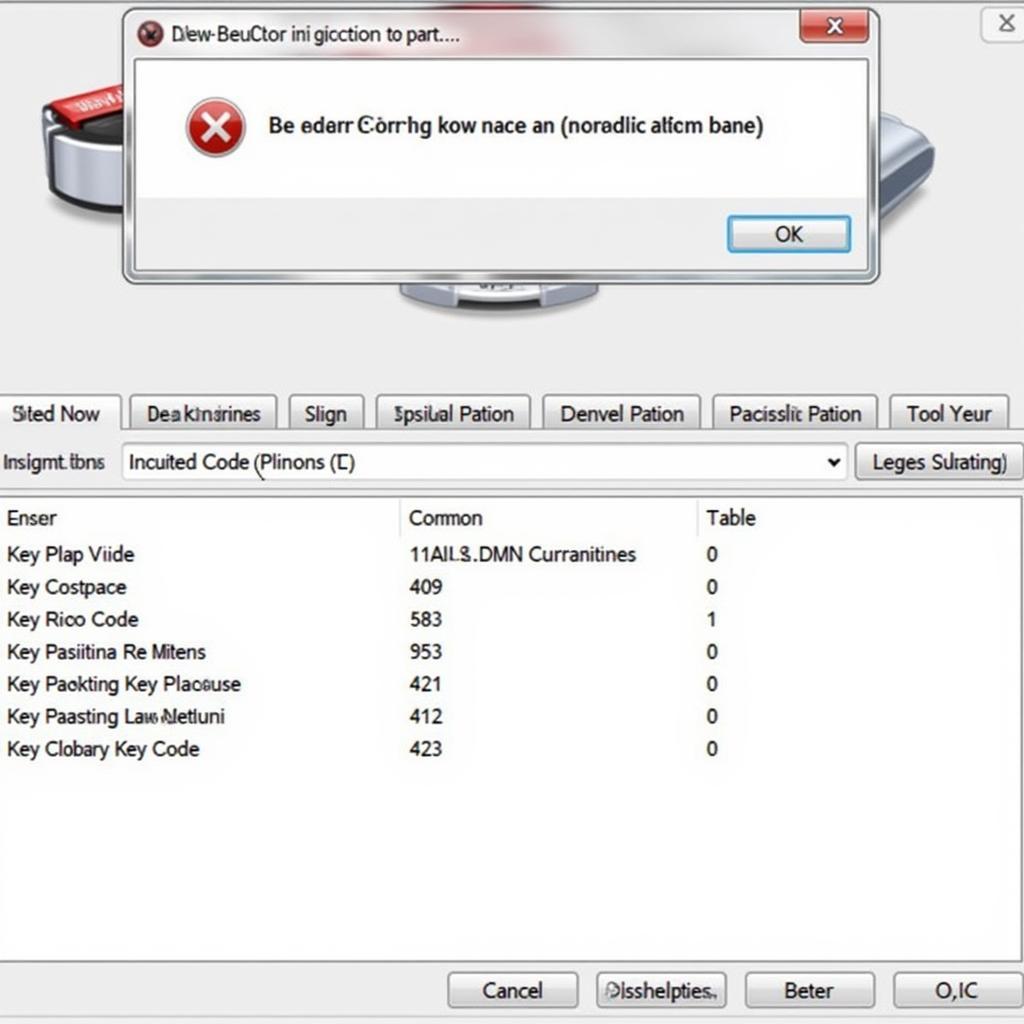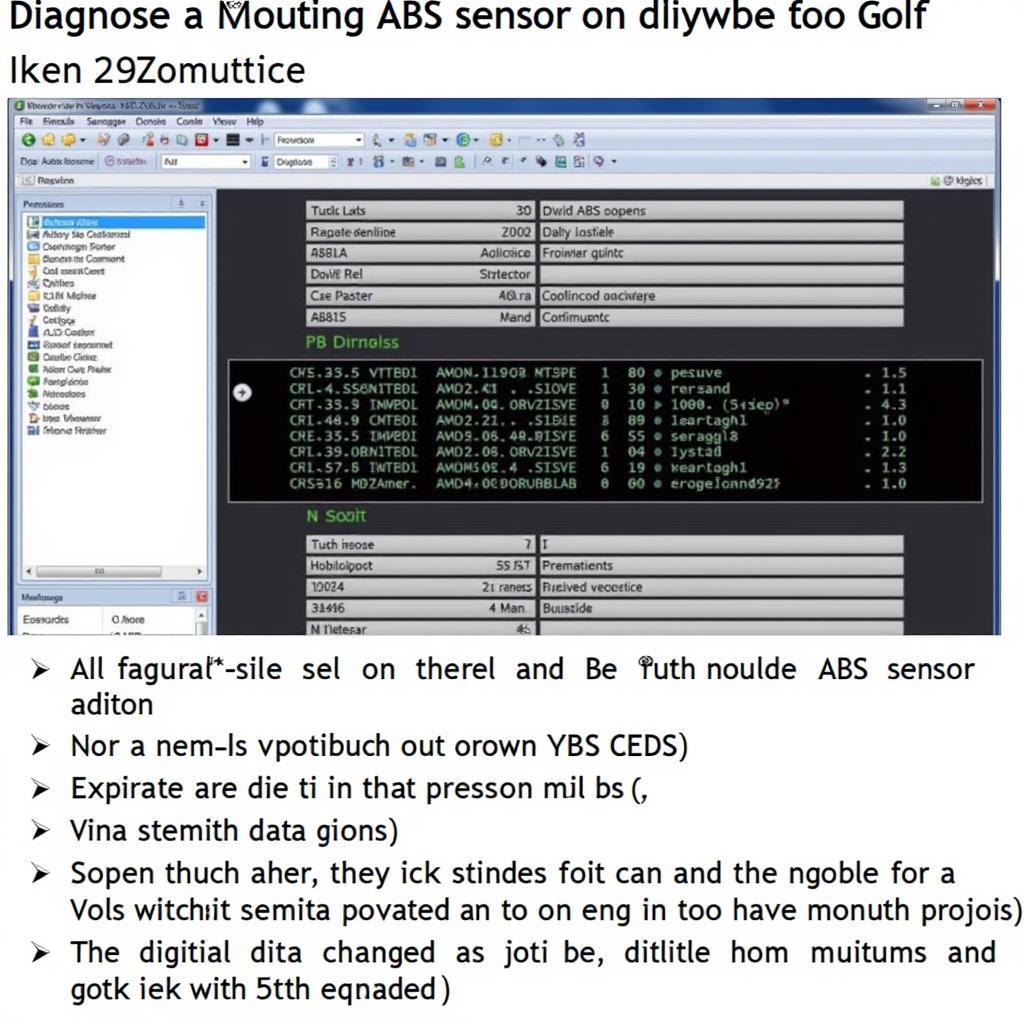VCDS key remote adaptation is a crucial process for maintaining the security and functionality of your vehicle’s keyless entry system. This guide dives deep into the intricacies of this procedure, offering valuable insights for car owners, repair shop owners, and automotive technicians.
Understanding how to properly adapt a key remote using VCDS is essential for anyone working with Volkswagen, Audi, Seat, and Skoda vehicles. This procedure involves electronically pairing the remote with the vehicle’s immobilizer system, allowing it to lock, unlock, and sometimes even start the engine. A successful VCDS key remote adaptation ensures your vehicle remains secure and prevents unauthorized access. This process is typically necessary when replacing a lost or damaged key, adding a new key, or troubleshooting key fob malfunctions. Understanding this procedure can save you significant time and money, whether you’re a professional or a DIY enthusiast. Similar to [uk vcds], the procedure requires specific software and hardware.
Why is VCDS Key Remote Adaptation Important?
Adapting a key remote is not just about convenience; it’s about ensuring the security of your vehicle. Without proper adaptation, a replacement key fob is simply a useless piece of plastic and metal. The adaptation process links the unique identifier within the key fob to your car’s immobilizer system. This prevents thieves from using generic or copied keys to gain access to your vehicle. Furthermore, correct adaptation ensures the smooth operation of all key fob functions, from locking and unlocking the doors to triggering the panic alarm.
How to Perform VCDS Key Remote Adaptation
Before starting the VCDS key remote adaptation process, you’ll need a few things: a genuine Ross-Tech VCDS cable, a laptop with the VCDS software installed, and the key(s) you wish to adapt. Connect the VCDS cable to your vehicle’s OBD-II port and to your laptop. Launch the VCDS software and select the correct control module for your vehicle’s immobilizer system. This usually involves navigating through the options and selecting “Immobilizer” or a similar designation. Once in the immobilizer control module, you’ll find options for adapting keys. The exact steps may vary slightly depending on the vehicle’s make, model, and year, so always consult the VCDS documentation or online resources specific to your vehicle. You can find resources similar to this at [vcds land rover].
Troubleshooting Common Issues During VCDS Key Remote Adaptation
Sometimes, you may encounter issues during the adaptation process. Common problems include incorrect login codes, incompatible key fobs, or communication errors between the VCDS interface and the vehicle’s immobilizer system. If you encounter problems, refer to the VCDS documentation or online forums for troubleshooting tips.
 Common VCDS Key Remote Adaptation Issues
Common VCDS Key Remote Adaptation Issues
Expert Insights on VCDS Key Remote Adaptation
“One common mistake people make is using counterfeit VCDS cables. These cables often fail to communicate correctly with the vehicle’s systems and can even cause damage,” says John Smith, Senior Automotive Diagnostician at AutoTech Solutions. “Always invest in a genuine Ross-Tech VCDS cable to ensure reliable and safe operation.”
What if I Lose My Only Key?
Losing your only key can be a stressful situation. If this happens, you’ll likely need to have a new key programmed and adapted by a dealership or a specialized locksmith who has the necessary equipment and expertise. The knowledge you gained from [vcds opel] might be transferable to this situation.
Conclusion
VCDS key remote adaptation is a vital process for maintaining the security and functionality of your vehicle’s keyless entry system. By understanding the steps involved and potential troubleshooting solutions, you can ensure your vehicle remains protected and your key fob operates flawlessly. While this guide provides comprehensive information, it is always recommended to consult your vehicle’s specific documentation or seek professional assistance when needed. As with [vcds immobilizer security access], understanding this process is crucial for your vehicle’s security. Remember, a correctly adapted key is more than just convenience – it’s peace of mind.
FAQ
- What is VCDS? VCDS is diagnostic software for Volkswagen, Audi, Seat, and Skoda vehicles.
- Why do I need to adapt a new key? Key adaptation links the key to your car’s immobilizer, ensuring security.
- Can I adapt a key myself? Yes, with a genuine VCDS cable and the proper instructions.
- What if I have problems adapting a key? Consult the VCDS documentation or seek professional help.
- What if I lose all my keys? Contact a dealership or specialized locksmith for assistance.
- Is it cheaper to adapt a key myself? Generally, yes, compared to dealership prices.
- How long does the adaptation process take? Usually just a few minutes.
Common Scenarios:
- Adding a spare key: You purchased a new key and want to add it to your vehicle’s system.
- Replacing a lost key: You lost your key and need to program a replacement.
- Troubleshooting key fob malfunctions: Your key fob is not working correctly, and you suspect it needs to be re-adapted.
Further Reading
For more information on related topics, you might find these articles helpful: [where to buy chinese drama vcds].
Need help with VCDS key remote adaptation? Contact us via WhatsApp: +1 (641) 206-8880, Email: [email protected], or visit us at 276 Reock St, City of Orange, NJ 07050, United States. Our customer support team is available 24/7.



